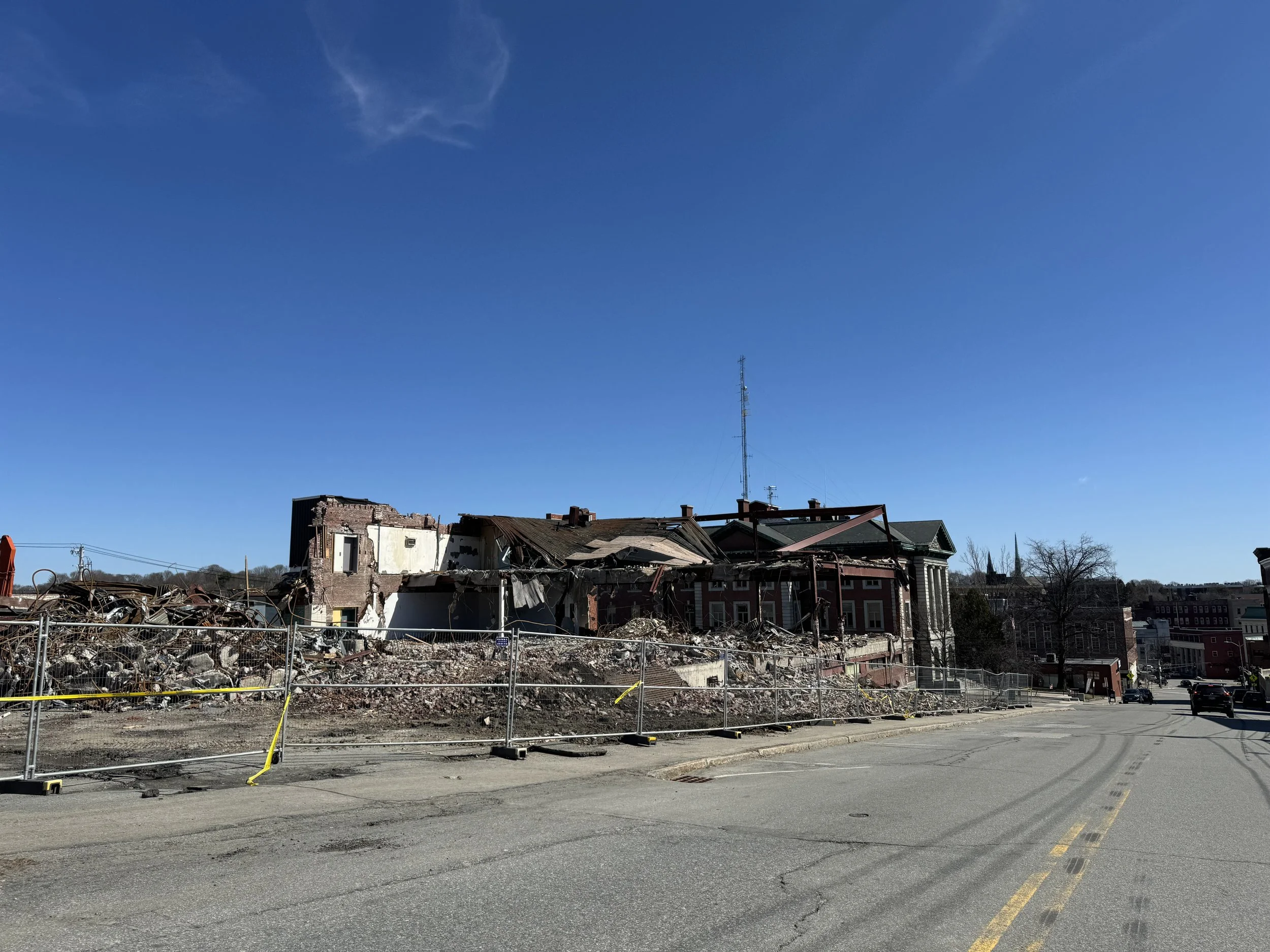Fortifying Your Home: Comprehensive Earthquake Preparedness in New England
Introduction:
The recent tremors felt across New England have jolted homeowners into reconsidering the earthquake readiness of their properties. While New England is not traditionally known for seismic activity, the occurrence of unexpected earthquakes has highlighted the need for preparedness. This blog aims to guide you through enhancing your home’s resilience against earthquakes, drawing insights from the recent events and researched recommendations.
Panoramic view of Acadia National Park and The Bowl heading to Mount Champlain in Maine, showcasing lush greenery and rugged peaks under a clear blue sky. (https://www.nps.gov/acad/index.htm)
Understanding the Risks to Your Home:
Earthquakes can inflict varying degrees of damage on residential structures. While modern buildings are designed with some level of seismic consideration, many homes, especially historic ones prevalent in New England, may not be. Damage can range from minor, such as cracks in drywall, to significant structural issues that can render a home unsafe. The first step in earthquake preparedness is understanding these potential risks and identifying specific vulnerabilities in your home.
Strategic Home Reinforcement Techniques:
- Foundation Bolting: This process involves securing the house to its foundation with bolts or steel plates, crucial for preventing the home from sliding during seismic activity.
- Cripple Wall Bracing: Homes with a crawl space might have cripple walls that need reinforcement with plywood bracing, enhancing the structural integrity of the foundation area. (https://www.earthquakecountry.org/step4/cripplewalls/#:~:text=Wooden%20floors%20and%20stud%20walls,braced%20to%20resist%20horizontal%20movement.)
- Secure Water Heaters and Appliances: Anchoring large appliances and water heaters to wall studs can prevent tipping, water damage, and gas leaks.
Interior Safety Measures
Ensuring the safety of the home's interior is equally important. Bookcases, heavy furniture, and home electronics should be securely fastened to walls. Use museum putty or straps for smaller items on shelves and ensure cabinets have secure latches to prevent them from swinging open.
Insurance and Documentation: Expanded Insight:
Regularly review your homeowner's insurance policy to understand what is covered in the event of an earthquake. Consider additional earthquake insurance if your policy lacks coverage. Documenting your home’s contents and any upgrades or renovations with photos or video can be invaluable for insurance claims. It's also wise to keep important documents in a secure, easily accessible location.
Building a Community Support System:
Connect with local emergency preparedness groups or neighborhood associations focused on disaster readiness. These communities can provide support, resources, and collective knowledge in the aftermath of an earthquake. Sharing strategies and resources can strengthen the entire community's resilience. https://www.fema.gov/locations/maine - https://www.maine.gov/mema/home
Innovations in Earthquake Detection and Home Safety:
Invest in smart home technologies that offer earthquake detection and automatic shutoff features for gas, water, and electric to prevent fire and flooding. Seismic retrofitting companies are also innovating with new materials and methods to provide higher levels of protection with less invasive installation processes.
Proactive Steps for Homeowners:
- Conduct a Home Seismic Evaluation: Hire a professional to assess your home's earthquake vulnerability and recommend specific retrofitting measures.
- Educate Your Household: Ensure all family members know how to respond during and after an earthquake, including how to turn off the home's gas, water, and electricity. It is fun to practice with kids with a go bag full of some of their favorites, and keeps them calm in an emergency!
- Assemble Emergency Kits: Have earthquake emergency kits in key locations throughout your home, including supplies for at least 72 hours.
Earthquake Preparedness FAQs
Q1: What should I do during an earthquake if I'm inside my home?
A: The safest action is to "Drop, Cover, and Hold On." Drop to your hands and knees, cover your head and neck with your arms or take cover under sturdy furniture, and hold on until the shaking stops.
Q2: How can I make my home safer in case of an earthquake?
A: Secure heavy furniture and appliances to walls, install latches on cabinets, strap water heaters and large appliances to wall studs, and consider professional seismic retrofitting to strengthen your home's structure.
Q3: Is earthquake insurance necessary?
A: It depends on your location and the likelihood of earthquakes. Standard homeowner's insurance policies typically don't cover earthquake damage, so if you're in an area with seismic activity, earthquake insurance can provide additional protection.
Q4: How do I create an earthquake emergency kit?
A: Your kit should include water (one gallon per person per day for at least three days), non-perishable food, a flashlight, a first aid kit, extra batteries, a whistle to signal for help, dust masks, plastic sheeting and duct tape for shelter, and wrenches or pliers to turn off utilities.
Q5: Can pets stay with me during an earthquake?
A: Yes, keep pets close if possible. Prepare an emergency kit for them as well, including food, water, and any necessary medications.
Q6: How often should I practice earthquake drills at home?
A: It's recommended to conduct earthquake drills at least twice a year. Familiarizing your family with evacuation routes and safe spots in your home can significantly improve everyone's safety during an actual quake.
Q7: What structural modifications can enhance my home's earthquake resilience?
A: Consider seismic retrofitting options such as foundation bolting, cripple wall bracing, and securing the framing of your home to its foundation. Consulting with a structural engineer can provide tailored recommendations for your property. Make sure your building foundation goes to bedrock.
Q8: How do I secure appliances and electronics?
A: Use flexible straps to secure large appliances like refrigerators and stoves to wall studs. Mount flat-screen TVs to walls and use velcro straps for smaller electronics.
Q9: What's the safest place to be in my home during an earthquake?
A: Safest spots are under sturdy furniture, against an interior wall, and away from windows, glass doors, and heavy objects that could fall. Avoid exterior walls and areas near chimneys.
Q10: After an earthquake, what immediate steps should I take to ensure safety?
A: Check yourself and others for injuries. Turn off the gas if you smell it or suspect a leak, GET OUT OF THE HOUSE! Use your phone only for emergency calls to keep lines open. Check for structural damage to your home, and avoid using damaged electrical appliances until they've been inspected.
Got more queries or need personalized advice? Don't hesitate to reach out! Just fill out the form below, and we promise to address your questions with expert insights by next week. Let's navigate these challenges together!


